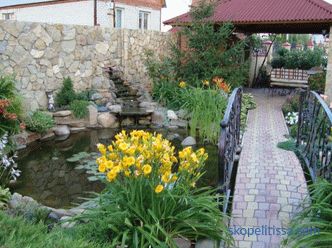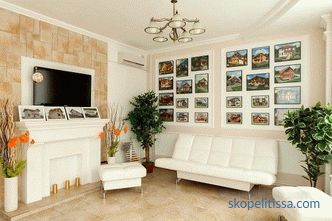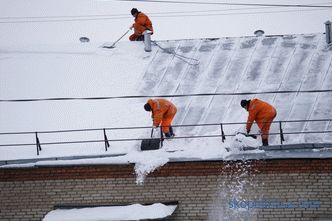Gypsum decor is among the most common ways to decorate a garden. The article describes the plaster figurines, the pros and cons of plaster ornaments and how to paint garden figurines. You will learn how to choose a paint and a processing method, how to prepare an object for painting, from what stages this process is made. Useful will be information about the care of painted garden sculpture and its restoration.
About the features of gypsum jewelry
In the arsenal of landscape design, there are many ways to give the garden is a special color, make it more expressive. One of them is the use of decorative details in line with the overall design concept. Depending on the style, both figurines made of porcelain, ceramics and plastic, as well as antiquarian things (if the garden is decorated in traditional style) can be an ornament.
Among other options, gypsum sculpture is particularly popular. Small plaster figurines are made in different styles and fit into any landscape, making it original and memorable. Gypsum products have the following advantages:
-
A large selection of . The range of decorative plaster figurines on the market pleases with a variety. You can always choose a sculpture that best suits the style, shape and size for your garden.
-
Budget . Gypsum garden products are notable for their good value for money, their purchase will not be an unbearable burden for the family budget.
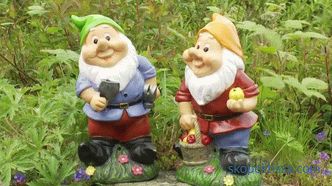
-
Environmentally friendly . As a material of natural origin, gypsum does not adversely affect health and the environment. Restrictions on the installation site of gypsum products does not exist.
-
Durability . Quality figures will last you for many years and at the same time retain their original appearance.
-
Variability . Gypsum products can be left unpainted, painted in the chosen style, and, if necessary (or desired), repainted.
-
Fire Safety . Gypsum is absolutely incombustible, sparks from the brazier or occasional fireworks are not terrible to him.
-
Care . Plaster figurines and statues do not require regular maintenance.
The weakness of gypsum is its fragility. Careless movement or childish pranks can be harmful, and then a crack or spall appears on the surface; in more severe cases, the item deteriorates permanently. Another drawback of the material is porosity, which is why it is undesirable to use non-tinted plaster sculpture in the garden.
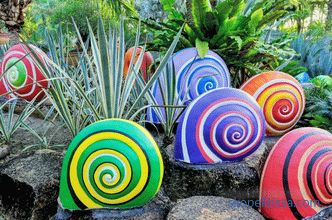
On our site you can find contacts of construction companies that offer landscaping services. You can directly communicate with representatives by visiting the low-rise country exhibition.
Selection of coverage and method
Garden decor is outdoors and is experiencing the power of solar ultraviolet radiation, low temperatures and high humidity. The surface of unprotected gypsum is able to actively absorb moisture, which causes the material to deteriorate. It is not surprising that plaster sculpture requires periodic maintenance, and sometimes restoration of the paintwork. The question of how to paint garden plaster figurines is decided taking into account the following facts:
-
The use of standard oil paints should be discarded immediately - they form airtight film, which is bad for a plaster surface. If such paint cannot be discarded (you want to get the effect of bronze), the surface is pre-treated with an alcoholic solution of rosin.
-
The best choice will be water-based acrylic paints . This coating is resistant to abrasion and fading; Additionally, the water-dispersion composition provides reliable protection from atmospheric moisture.
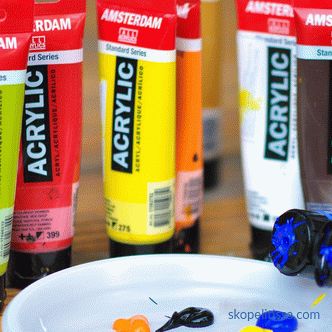
-
allowed to use paints imitating gilding , copper or bronze coating, or potali (gilding). Using the technique of gilding or silvering requires certain skills, but it allows you to get an unusual and unique decorative item.
-
Turning into aged marble . To make the surface of the figure resemble a noble stone, it is impregnated with linseed oil or coated with shellac lacquer, followed by drying.
-
Imitation of a wax surface . To garden decor looked like wax, it is treated with a solution of gasoline or turpentine with wax in the composition. After complete drying, the product is rubbed, and then a beautiful waxy gloss appears on the surface.
About the professional painting of the garden figure in the following video:
Preparing for painting
Choosing, what paint to paint garden figures, do not forget about the intricacies of the process of painting. It is important to remember that:
-
The color range is selected on the basis of the design idea and features of the future location of the garden figurine.
-
The volume of inks purchased will be different. As a rule, white, black or beige paint is acquired in a large volume - it is applied to the entire surface and, as a rule, is used as an additional primer. The consumption of color paints will be much smaller, so you should not buy them with a margin.
-
For painting large surfaces it is convenient to use the spray gun; you will need a brush to draw the details; You can do with a cotton swab or gauze.
-
The peculiarity of acrylic paint is - it dries quickly, and it is possible to remove dried paint only with the help of a special solvent. Therefore, the excess from the surface of the sculpture must be removed immediately, and the brush will have to be periodically washed.
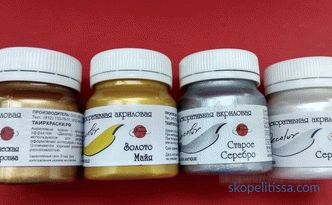
On our site you can find contacts of construction companies that offer the service construction of small architectural forms. You can directly communicate with representatives by visiting the low-rise country exhibition.
How plaster is painted
It is better not to delay the painting of the figures, since the absorbing properties of the plaster surface decrease with time, which makes the paint worse to fall. When painting plaster products, the following techniques are used:
-
Painting is carried out in a ventilated room , and the decor is left there until it is completely dry for at least a day.
-
One of the common methods of dyeing is adding color pigment to the gypsum solution (at the manufacturing stage of the mold). The result is a product that is painted throughout the volume, which makes its operation more practical (accidental damage and chips remain invisible). Many do not like this approach because of the inexpressive results and the impossibility of using special effects (silver, bronze or porcelain staining).
How to paint the figures with the spray gun in the following video:
-
A popular technique is layer-by-layer application of water-soluble paints using a tampon. The gypsum surface absorbs water unevenly. The combination of several layers and shades allows to get the effect of a natural material; with some training, imitation is quite reliable.
-
In order to get a more saturated color , paint is applied in two to three layers. This must be taken into account when mixing colors of several tones in sufficient (or better with a small margin) volume. Each subsequent layer is applied at least three hours later.
Painting garden decor is carried out in the following order:
-
Preparation . Before painting plaster garden figures, the surface is carefully treated with a primer; then the main paint will fall flat and neat. You can buy ready-made composition in the hardware store or make yourself from a mixture of two parts of water and one part of PVA glue.
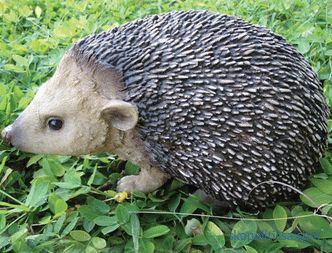
It can be interesting! In the article on the following link read about a donkey with a cart in the garden decor.
-
Protection . If you want to decorate the garden with a classic white garden figure, care must be taken to protect the pores of the plaster; otherwise, an elegant piece of jewelry will quickly lose its whiteness. Usually a protective compound (primer) is applied in the workshop. If you want to do it yourself, do not forget to thoroughly clean the surface.
-
Painting . Choose formulations intended for outdoor use. To put a complex drawing with a lot of details, it is convenient to pre-outline the pattern with a simple pencil.
-
Paint application . Rain, fog and snow contribute to the destruction of unprotected gypsum, sucking it with water. Painted plaster figurine must be given maximum moisture resistance. To do this, it is covered with weather-resistant transparent varnish on a polyurethane or silicone base (you can yacht). Paint and varnish composition can be glossy or matte; the latter gives the figure a more natural look. The lacquer layer enhances the brightness of colors; To make a shiny surface truly reliable, several layers are applied.
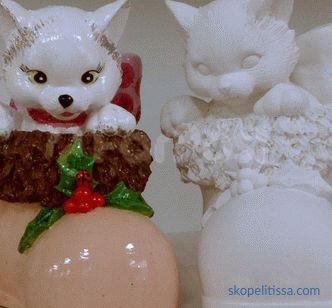
Caring for painted garden figures
For any garden the decor needs care, therefore, the plaster sculpture needs careful treatment and periodic cleaning.How much time you spend on care depends on the quality of the products. Purchase such garden décor elements that meet the standards: moisture resistant, covered with high quality paint and withstand temperatures ranging from -10 to + 50 ° C. Care of such products will consist in the following actions:
-
Removal of dust and dirt with a damp soft sponge.
-
Periodic treatment with an antifungal compound .
-
If winter temperatures fall below what is considered permissible and specified in the instruction (certificate), decor is removed for wintering in the barn . Otherwise, the paint layer is likely to crack.
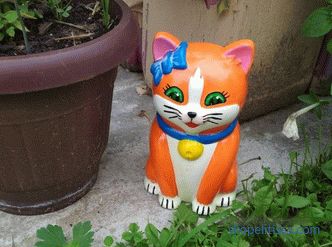
It might be interesting! In the article on the following link, read about the wave-house in Finland.
Conclusion
During a long summer, plaster figures often lose their shape, the paint layer fades, sometimes it starts to crack and peel. Problems begin due to the use of improper or low-quality paint or improper operating conditions (if the gnomes spent the whole season in a too wet place). You can take advantage of the winter respite and restore the funny people of the garden. To do this, the damaged areas of the paint are brushed with a metal brush, possible cracks are smeared with plaster mortar or plaster mix. Treated places are primed and tinted (if there are no acrylic paints on hand, gouache will do as well). The dried figurine is entirely varnished for outdoor work; after restoration, she is again ready to take her place in the sun.
Rate this article, we tried for you
